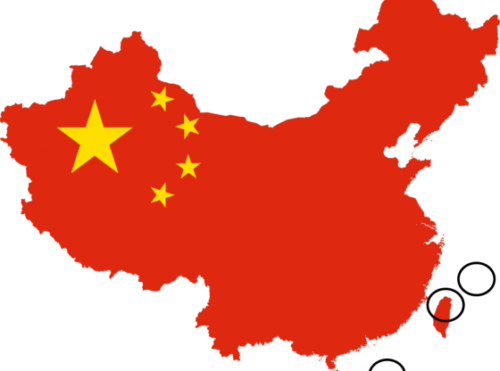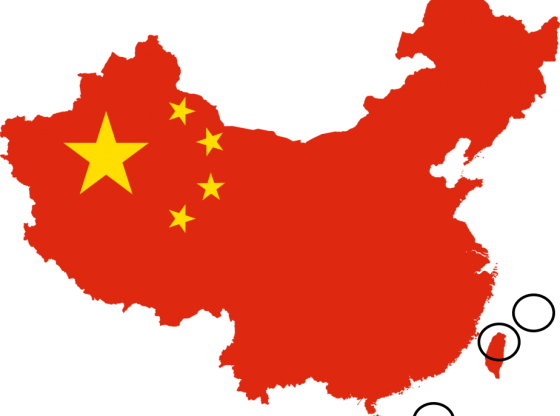
The Chinese Communist Party (CCP) leadership has been testing President Joe Biden in the Pacific since before he assumed office, but increasingly since January 20. As I have written, China has flown dozens of combat aircraft near America’s island ally – Taiwan – and announced a policy allowing its coast guard to fire on foreign vessels in the South China Sea (SCS) and elsewhere. More recently, China has been bullying Japan and threatening Japan’s Senkaku Islands.
While there are several more, these are likely the three biggest flashpoints in the Pacific today – Taiwan, and Taiwan Straits, the South China Sea, and Japan and the Senkaku Islands.
As CNN notes: “Analysts say such moves are likely only the beginning of what is expected to be a potentially uneasy initial relationship between the new Biden administration and Beijing.”
After Team Biden’s disastrous first meeting with Chinese officials in Alaska, where Chinese officials berated the U.S. for over 15 minutes uninterrupted, expect the tests to increase and become more serious. Carl Schuster, a former director of operations at the US Pacific Command’s Joint Intelligence Center told CNN:
China often uses a series of ‘tests’ to determine a competitor’s intentions or willingness to respond to China’s actions.
Schuster added that the next tests from Beijing could include large-scale military exercises near Taiwan or using its armed coast guard to stop foreign vessels in the name of enforcing Chinese maritime laws. China will be trying to see where Team Biden’s “red lines” are, said Schuster.
Expect these Chinese tests to center around the three major flashpoints noted above.
Taiwan
China is obsessively focused on retaking what it considers the renegade province of Taiwan, increasingly conducting invasion drills near the island. In response, U.S. warships transited the Taiwan Straits separating Taiwan from China, 13 times in 2020, according to the U.S 7th Fleet – an all-time high.
Under President Trump, the U.S. ramped up its commitment to Taiwan in other ways as well by approving the sale of sophisticated military hardware to Taipei, including F-16 jet fighters, advanced offensive missilesfor the first time in four decades, and main battle tanks, while sending high-level representatives to the island.
Despite initial concerns of a Biden pullback on Trump China policies, recent statements from Team Biden suggest there will be no pullback on these actions backing Taiwan. Biden even invited Taiwan’s de facto Ambassador to the U.S. to his inauguration.
However, expect a big Gray Zone test for Biden on Taiwan soon.
South China Sea
China illegally claims almost the entire 1.3 million square miles of the South China Sea creating potential conflicts with most of its smaller neighbors including: Philippines, Vietnam, Malaysia, Indonesia, Brunei, and Taiwan. As I have noted, these claims have been rebuffed by the U.S., UN, and international tribunals, but that has not stopped China.
Since 2014 it has built up small reefs into man-made artificial islands to establish their presence and de facto control of the area. While initially claiming the islands would not be militarized, China has since reinforced these new outposts with missiles, airfields, and other armaments. It has also recently increased the frequency and size of its military drills in the area.
Under Trump, the U.S. officially rejected China’s claims and increased its Freedom of Navigation Operations (FONOPS) by sending warships and aircraft throughout the SCS. Hopefully, these operations won’t diminish under Biden.
CNN notes that during his campaign last year, Biden said that as vice president he told Chinese leader Xi Jinping how the US military would deal with Beijing’s self-declared air defense identification zones in the region. “I said we’re going to fly through them … We’re not going to pay attention.”
While continuing these FONOPS are critical, expect China to challenge the status quo by devising a new Gray Zone test for Biden in the SCS.
Japan and Senkaku Islands
The U.S. alliance with Japan is one of the most important in the Pacific with the U.S. Navy’s powerful 7th Fleet based in Yokosuka, and Kadena Air Force base in Okinawa (known as the ‘Keystone of the Pacific’) hosting F-15 jet fighters and P-8A anti-submarine warfare planes, and the island also serves as the base for the Marine Corps’ Third Marine Division.
Japan’s Self-Defense Forces are one of the world’s best militaries, and Japanese troops regularly train with their U.S. counterparts. Recently that training has been focused on defending Japan’s far-flung island chains from Chinese invasion and encroachment. The biggest flashpoint here includes Japan’s uninhabited Senkaku Islands over 1,000 miles from Tokyo.
Late last year, China attempted to assert its claims on the islands, which it calls the Diaoyus, with coast guard vessels swarming and surrounding the islands for record lengths of time. Since February Chinese ships continue to enter Japanese waters near the islands.
Under Trump, the U.S.-Japan alliance was significantly strengthened, and military ties deepened. In a call with Japanese Prime Minister Yoshihide Suga last month, Biden pledged continuity with Trump’s efforts and promised America’s ongoing commitment to defending the Senkakus under the US-Japan Mutual Defense Treaty.
However, China is not likely to invade the islands. Instead, expect greater Gray Zone tests employing its coast guard to possibly board and inspect foreign ships in the waters around the islands.
How Biden responds to CCP Gray Zone tests in any of these or all three Pacific flashpoints could lead to even greater Chinese tests, or to actual conflict.

PAUL CRESPO is the Managing Editor of American Defense News. A defense and national security expert, he served as a Marine Corps officer and as a military attaché with the Defense Intelligence Agency (DIA) at US embassies worldwide. Paul holds degrees from Georgetown, London, and Cambridge Universities. He is also CEO of SPECTRE Global Risk, a security advisory firm, and President of the Center for American Defense Studies, a national security think tank. Reproduced with permission. Original here.
